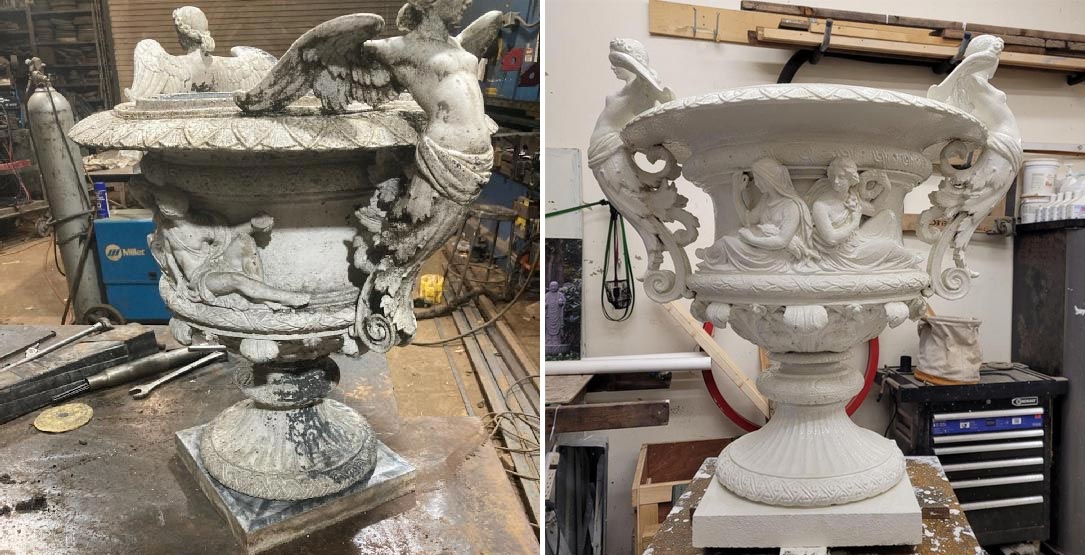Cast Iron
Cast-iron garden pieces have their own problems and solutions that require specific care and attention. [If you need to identify which of your urns or benches are cast iron, take a kitchen magnet and see if it sticks to the surface. It will adhere to iron but not to aluminum, bronze, or zinc.] Unfortunately, rust is a constant companion, and if cast-iron ornaments are left out in the rain or snow unprotected, it will turn up. But with sufficient primer and enough coats of paint, rust can certainly be kept at bay. The positive side of cast iron in winter is that structurally it can survive freezing weather even better than some stone pieces. While cast iron tends to be more impervious to winter weather than terra cotta or stone, be aware that freezing temperatures can cause brittleness and breakage. Do not attempt to move any cast-iron garden seats that have frozen to the ground as legs, made brittle in freezing weather, can snap off easily.

We are often asked if it’s okay to repaint cast iron, or, more pointedly, whether the “original surface” matters. Since the mid-19th-century, cast-iron garden ornaments were meant to be painted and repainted. Doing so will not affect the value of your investment and will stave off the erosion that will result from rust left untended. Indeed, multiple layers of paint often endow these objects with “character” commensurate with age. When a post-Civil War statue in Oak Bluffs, Martha’s Vineyard, was restored it was found to have had 21 layers of paint. While 21 layers may be more than most objects have, it does help us to illustrate the tradition and necessity of painting cast-iron ornaments.
If you use white paint, you will discover that the piece will need repainting more often than if you use a darker color, since it tends to show dirt more easily. If painting cast iron yourself, we suggest first wire-brushing any loose surface rust or paint, then applying an outdoor primer and, lastly, the exterior paint in your choice of color. As we are often asked to recommend “historically accurate” paint colors, we generally endorse the use of colors cited in period trade catalogues: brown, white, black, and dark green. Keep an eye on painted cast-iron objects, as repainting (or touching up) is generally required every couple of years.
Another method for protecting the surface is a series of applications of paste wax that will arrest the rusting process on surfaces. It should be applied in the late fall and mid-spring. We advise consulting a professional conservator for other sealant solutions. If an excessive accumulation of paint has obscured details of the object’s design, consult a professional conservator or ironworker to discuss options for paint removal. There are several methods for removing layers of old paint but be wary as some popular approaches may damage the surface of the piece. For instance, power-washing done skillfully can be effective and less harmful than sandblasting. We recommend sandblasting only in the most extreme situations.